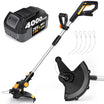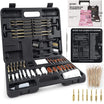Container gardening is an excellent solution for those with limited space. Whether you live in an apartment or have a small backyard, you can enjoy the benefits of gardening by growing plants in containers. Here’s a guide to help you get started with container gardening.
1. Choosing the Right Containers
Select containers that are appropriate for the plants you intend to grow. Ensure they have drainage holes to prevent waterlogging. Containers come in various materials, such as plastic, terracotta, ceramic, and metal, each with its advantages. For example:
- Plastic: Lightweight and affordable, retains moisture well.
- Terracotta: Porous, allows roots to breathe, but dries out faster.
- Ceramic: Attractive and durable, but can be heavy.
- Metal: Modern look, but can heat up quickly in direct sunlight.
2. Selecting the Soil
Use high-quality potting mix designed for container gardening. Avoid using garden soil as it can be too heavy and may not drain well. A good potting mix provides the right balance of nutrients, aeration, and drainage.
3. Choosing Plants
Choose plants that suit your space and light conditions. Consider the size of the mature plant and ensure it fits comfortably in the container. Some great options for container gardening include:
- Herbs: Basil, mint, rosemary, thyme.
- Vegetables: Tomatoes, peppers, lettuce, radishes.
- Flowers: Petunias, marigolds, geraniums, pansies.
- Succulents: Aloe vera, jade plant, echeveria.
4. Planting
- Fill the Container: Place a layer of gravel or small stones at the bottom for drainage. Fill the container with potting mix, leaving enough space for the plants.
- Plant: Place the plants in the container, ensuring their roots are covered with soil. Press the soil gently around the plants to secure them.
- Water: Water the plants thoroughly after planting to settle the soil.
5. Watering
Container plants tend to dry out faster than those in the ground. Check the soil moisture regularly and water when the top inch feels dry. Water early in the morning or late in the evening to reduce evaporation.
6. Fertilizing
Feed your container plants with a balanced, water-soluble fertilizer every 2-4 weeks during the growing season. Follow the instructions on the fertilizer package to avoid over-fertilizing.
7. Light and Placement
Ensure your containers receive the appropriate amount of sunlight based on the plants' needs. Most vegetables and flowers require at least 6 hours of direct sunlight per day. Arrange your containers to maximize light exposure and accessibility.
8. Maintenance
Regularly prune and deadhead your plants to encourage healthy growth and flowering. Check for pests and diseases, and treat any issues promptly with organic or chemical controls as needed.























Leave a comment
All comments are moderated before being published.
This site is protected by hCaptcha and the hCaptcha Privacy Policy and Terms of Service apply.